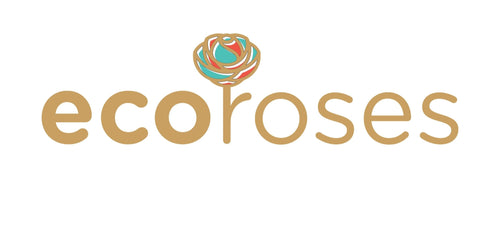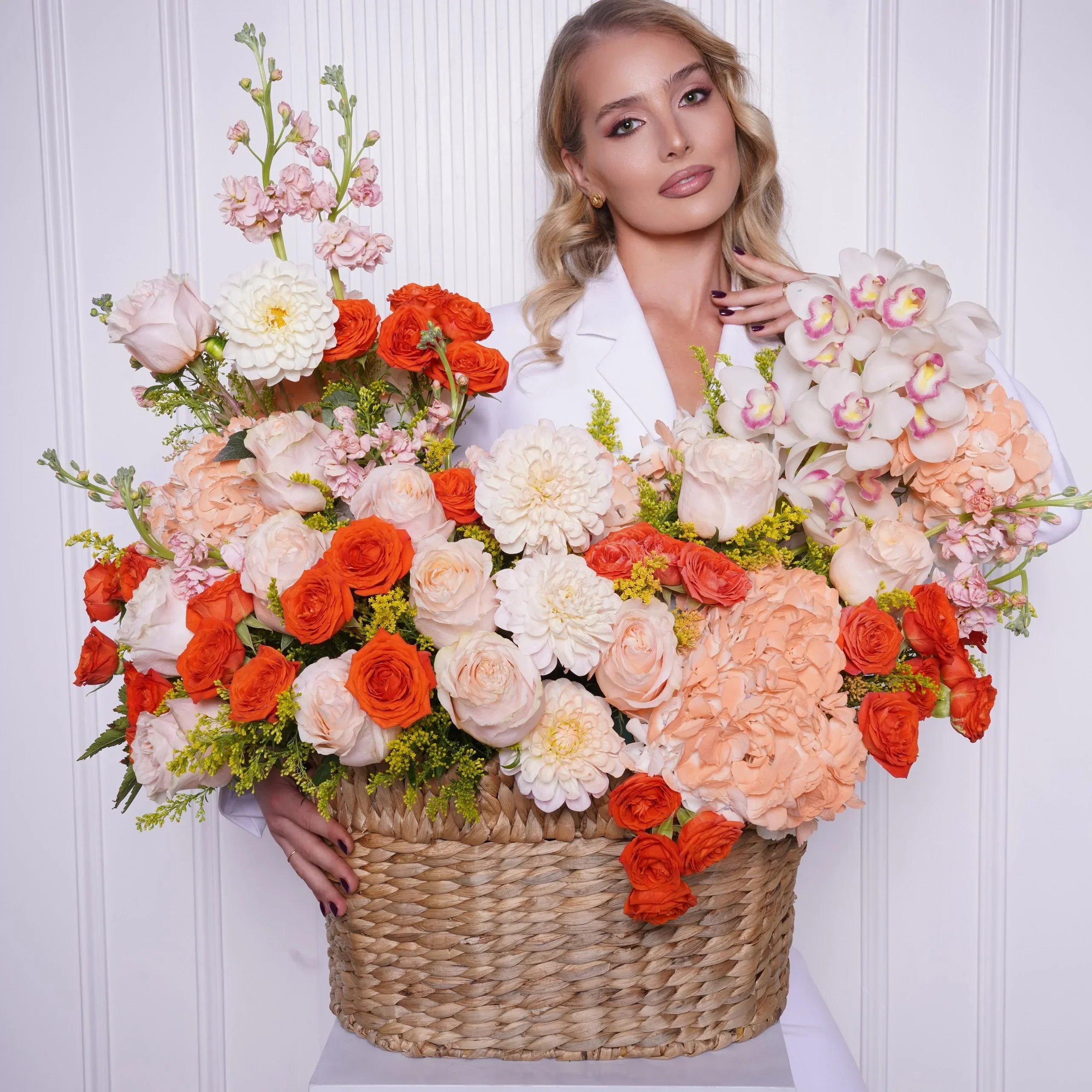Every spring, gardens burst into color, meadows shimmer with movement, and petals unfold like whispers to the wind. Yet beneath this peaceful beauty lies a fierce competition-a quiet, ongoing war for survival.
Each bloom is part of an evolutionary arms race, fighting not with claws or teeth but with color, fragrance, shape, and timing. This is the world’s most delicate rivalry: the silent battle for pollinators.
Flowers must attract bees, butterflies, birds, and even bats to reproduce. In doing so, they’ve evolved astonishing strategies-deceptive scents, seductive hues, and shapes sculpted by millions of years of natural selection.
At EcoRoses LA, this intricate interplay between nature and attraction finds its reflection in their naturally captivating floral creations, where every bloom tells a story of harmony, resilience, and irresistible beauty.
Let’s unravel this unseen contest-where petals become messages, fragrance becomes strategy, and survival depends on the power to seduce.
🌺 The Rules of Engagement: Why Flowers Need Pollinators
Unlike animals, flowers cannot move to find mates. Instead, they rely on pollinators to transfer pollen from one bloom to another. This process, pollination, ensures genetic diversity and reproduction.
However, there’s a catch: pollinators are selective. Bees prefer certain colors, butterflies favor open shapes, and bats navigate by scent at night. To succeed, each flower must stand out amidst countless rivals.
In nature, this means one thing: evolutionary advertising.
Every petal becomes a billboard. Every fragrance a marketing campaign.
Over time, flowers have perfected strategies to lure their ideal pollinators—while preventing others from “wasting” their precious pollen.
🌼 Color: Nature’s Visual Competition
When we see a meadow of wildflowers, we see beauty; pollinators see signals.
Color is one of the most potent tools flowers use to attract attention. Each pollinator perceives the world differently, and flowers have evolved to match those visual preferences:
-
Bees see ultraviolet (UV) light, invisible to humans. Many flowers have UV “bullseye” patterns that guide bees directly to their nectar.
-
Butterflies favor bright reds, oranges, and purples-colors that shimmer in sunlight.
-
Birds, especially hummingbirds, are drawn to red and scarlet, colors that signal rich nectar rewards.
-
Moths and bats-nocturnal pollinators-prefer white or pale flowers, which glow in low light.
In this battle of visibility, being seen is survival. A flower that fails to catch a pollinator’s eye simply fades into evolutionary silence.
🌸 Scent: The Invisible Weapon
If color is the flower’s billboard, scent is its whisper-a perfume designed to travel far and entice the right audience.
Different flowers have evolved fragrances tuned to their preferred pollinators:
-
Sweet and light aromas (like jasmine or rose) attract bees and butterflies during the day.
-
Musky, fruity, or fermented scents (like magnolia and fig) appeal to nocturnal beetles or bats.
-
Rotten or sulfur-like odors (such as in corpse flowers) mimic decaying flesh to attract carrion flies.
For instance, certain orchids imitate the scent and texture of female bees, causing males to attempt copulation and unknowingly carry away pollen.
It’s not just fragrance-it’s strategy.
🌺 Shape: Engineering for Efficiency
Beyond color and scent, floral architecture defines success in the pollination game.
-
Tubular flowers (like honeysuckle) evolved for hummingbirds with long beaks.
-
Flat, open blooms (like daisies) suit butterflies and bees that land while feeding.
-
Bell-shaped flowers (like bluebells) protect nectar from rain and wind.
-
Deep-throated orchids evolved alongside long-tongued moths in a perfect example of coevolution-a partnership so precise that one cannot thrive without the other.
Even the smallest structural change can shift which species visit, affecting entire ecosystems. Each form represents a biological compromise between attraction and protection.
🌿 Timing: The Clockwork of Bloom
In this floral rivalry, timing is everything.
Flowers open, release fragrance, and produce nectar according to pollinator activity. Morning blooms attract bees; dusk flowers call to moths.
Some even “close shop” once pollinated-redirecting energy to seed production. Others stagger their blooming schedules to reduce overlap with competing species.
This synchronization ensures maximum efficiency, turning the act of blooming into an art of precision timing.
🌸 Camouflage, Mimicry, and Deception
The competition doesn’t end with attraction-it extends to trickery.
Some flowers, instead of offering rewards, pretend to. This deception conserves energy while still gaining pollination services.
-
Orchids are masters of mimicry, copying the color and scent of nectar-rich flowers without producing any nectar themselves.
-
The “mirror orchid” mimics female insects so convincingly that males mistake it for a mate.
-
The bee orchid mirrors not only appearance but also vibration patterns when touched.
These floral impostors win the pollinator’s attention through illusion, proving that in nature, deception can be as powerful as beauty.
🌼 The Economics of Nectar
Producing nectar is costly-it requires water, sugar, and nutrients. Flowers must balance investment and return:
Too little nectar, and pollinators lose interest. Too much, and the flower wastes resources.
Some plants even ration nectar, refilling it only after a certain number of visits to encourage frequent pollinator traffic. Others manipulate sugar concentration to match their visitors’ preferences-hummingbirds like high sugar; bees prefer moderate sweetness.
It’s survival by economics-nature’s version of supply and demand.
🌺 Teamwork and Rivalry: Pollination Networks
While it seems flowers only compete, they also cooperate indirectly through shared pollinator networks.
In a meadow, hundreds of species coexist, each targeting slightly different visitors or time slots. This ecological harmony ensures biodiversity and ecosystem stability.
When human activity disrupts these patterns-through habitat loss or pesticides-the entire network weakens. Pollinators decline, and with them, the diversity of blooms we cherish.
The silent battle for pollinators is also a fragile dance of balance.
🌿 The Role of Color Evolution
Scientists have discovered that over millions of years, flower colors shift with the evolution of their pollinators.
For example, in Australia, native flowers transitioned from bee-preferred blues to bird-attracting reds as bird pollination became more dominant.
Similarly, flowers on isolated islands evolve unique hues to attract their limited pollinator species, leading to stunning biodiversity driven by isolation and necessity.
In this way, color evolution isn’t random-it’s conversation between flower and visitor, shaped by need and survival.
🌸 The Symphony of Senses
To truly understand how flowers compete, imagine being a pollinator:
-
A bee navigates by UV trails invisible to us, following luminous patterns to nectar.
-
A butterfly sees a painting of red and violet vibrations, fluttering toward fragrance.
-
A hummingbird locks onto a red beacon in motion, drawn by sugary fuel.
Each flower speaks a different sensory language-light, scent, vibration, texture-and pollinators interpret those cues through instinct.
It’s a global orchestra of attraction, perfectly tuned yet constantly evolving.
🌼 When Competition Turns Cooperative
Even in rivalry, nature finds balance.
In diverse ecosystems, flowers often bloom sequentially, ensuring that pollinators have a constant food supply. This floral succession benefits both plants and pollinators by preventing scarcity.
Some species even grow side-by-side strategically: tall flowers attract bees first, while shorter ones benefit from pollen dropped in flight-a form of unspoken cooperation.
This subtle choreography transforms competition into community-a reminder that even in nature’s fiercest battles, harmony often emerges.
🌺 The Cost of Losing the Battle
When pollinators decline, the stakes become devastatingly high.
Over 75% of flowering plants rely on pollinators. Without them, many species-both wild and agricultural-cannot reproduce. Habitat destruction, pesticide use, and climate change disrupt this ancient alliance, leading to cascading ecological collapse.
In this silent war, losing a pollinator means losing a lineage-a color, a fragrance, an entire story of evolution.
It’s why supporting pollinators through sustainable floristry and local planting is not just ecological-it’s ethical.
🌿 How Human Design Mimics Nature’s Attraction
Interestingly, florists and designers unconsciously replicate these evolutionary strategies.
When crafting arrangements, they:
-
Use color contrast to draw the eye (just as flowers attract bees).
-
Combine textures and scents for emotional depth (mimicking multisensory appeal).
-
Balance shape and spacing to create flow (mirroring natural efficiency).
In essence, modern floral artistry pays tribute to the original masters of attraction-flowers themselves.
EcoRoses LA embodies this philosophy, channeling nature’s competitive brilliance into designs that soothe and inspire-each bouquet a small echo of evolution’s creative genius.
🌸 The Hidden Intelligence of Flowers
Recent research suggests plants communicate chemically through the air and soil-warning each other of predators or signaling when to bloom.
Some flowers even “listen” to pollinators: studies show that when bees buzz nearby, certain plants increase nectar production within minutes.
This remarkable responsiveness highlights a truth long felt by poets and gardeners alike: flowers are not passive-they are aware.
Their silent battle is also an intelligent dialogue with their environment.
🌺 From Competition to Connection
As we learn more about these secret strategies, we see that the story of floral competition is ultimately about relationship-between plant and pollinator, beauty and function, survival and cooperation.
Each blossom is both artist and warrior, creating beauty not for our eyes but for the wings that sustain it. Yet in doing so, flowers have shaped entire ecosystems-and captured the human heart.
Their struggle for pollinators mirrors our own longing for connection and recognition-a shared biological poetry that binds all life.
🌿 How to Support Pollinators at Home
You can help sustain this natural harmony by creating pollinator-friendly environments:
-
Plant native flowers that bloom across seasons.
-
Avoid pesticides and chemicals that harm bees and butterflies.
-
Include diverse colors and shapes to attract various species.
-
Leave small water sources for insects and birds.
By cultivating biodiversity, you become part of nature’s grand collaboration-turning competition into coexistence.
🌸 Conclusion: Beauty, Strategy, and Survival
In the world of flowers, beauty is not vanity-it’s survival strategy.
Every hue, scent, and petal curve tells a story of adaptation, intelligence, and persistence.
The silent battle for pollinators reminds us that nature’s elegance is never passive-it’s purposeful, complex, and alive with motion unseen.
From the deceptive orchid to the radiant sunflower, each bloom fights not with violence but with grace-a reminder that sometimes, the strongest form of power is attraction itself.
And when you hold a bouquet from EcoRoses LA, you hold a reflection of that silent battle-a harmony of design, intention, and life’s eternal will to connect.
Each petal a victory. Each color a signal. Each scent a whisper in nature’s endless dialogue. 🌺


